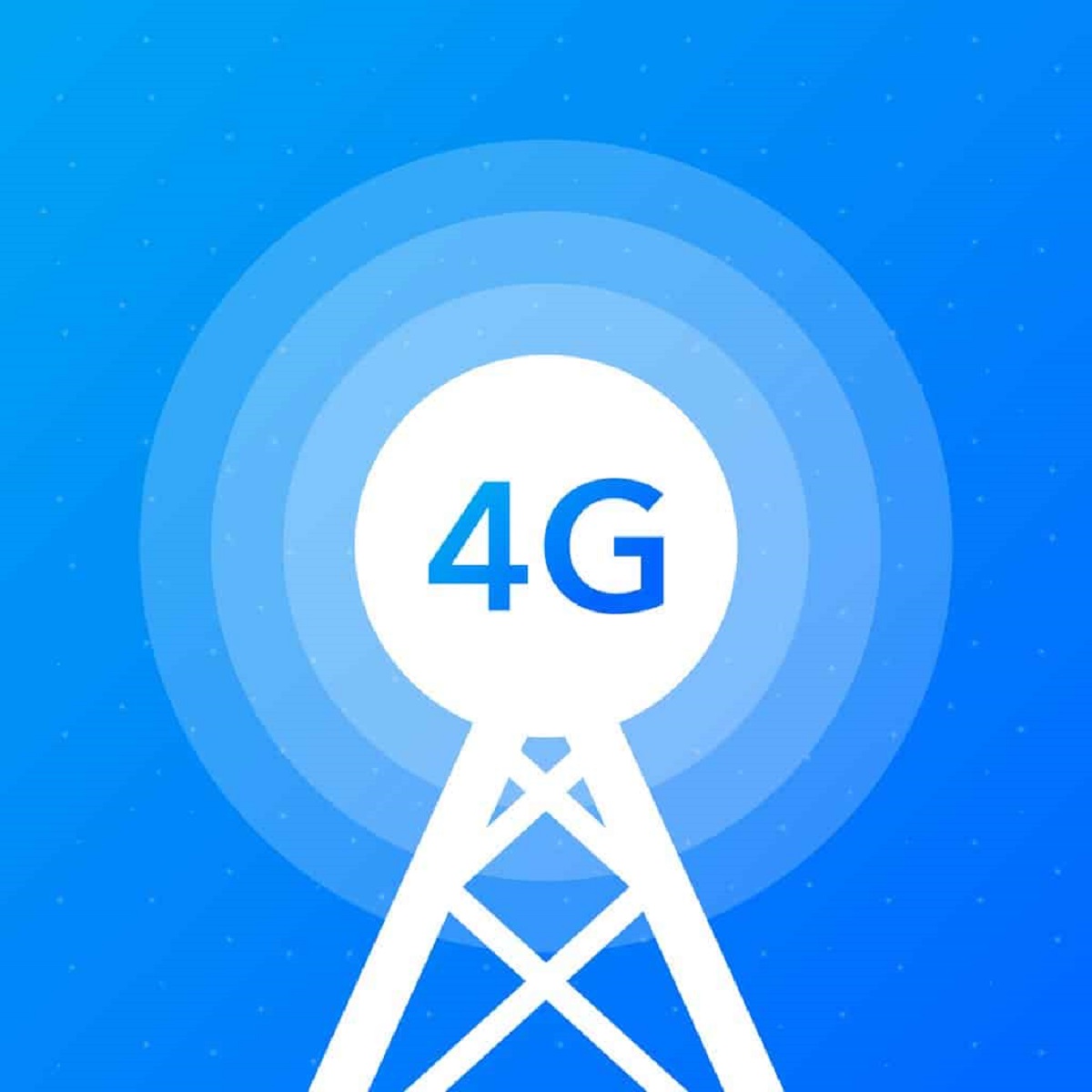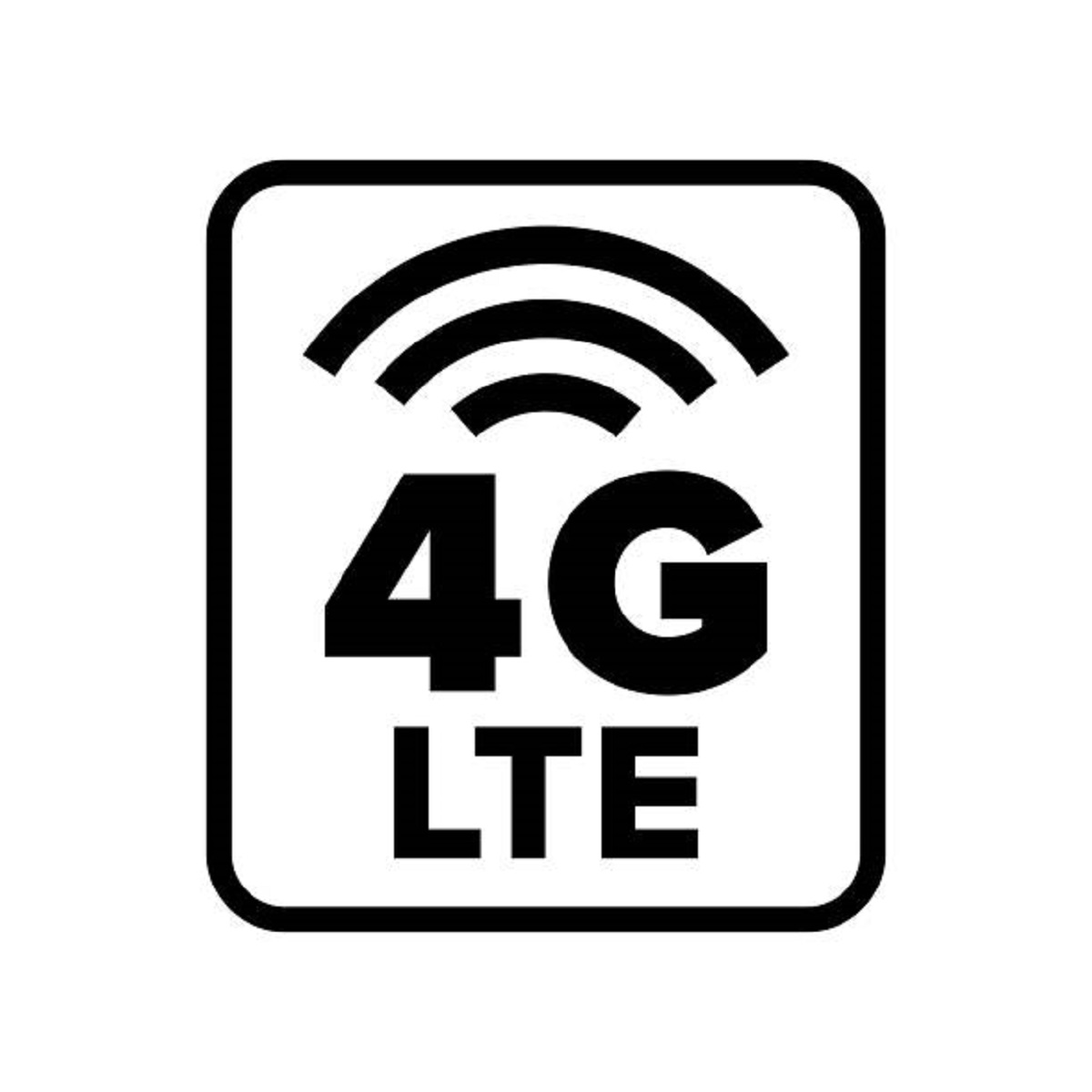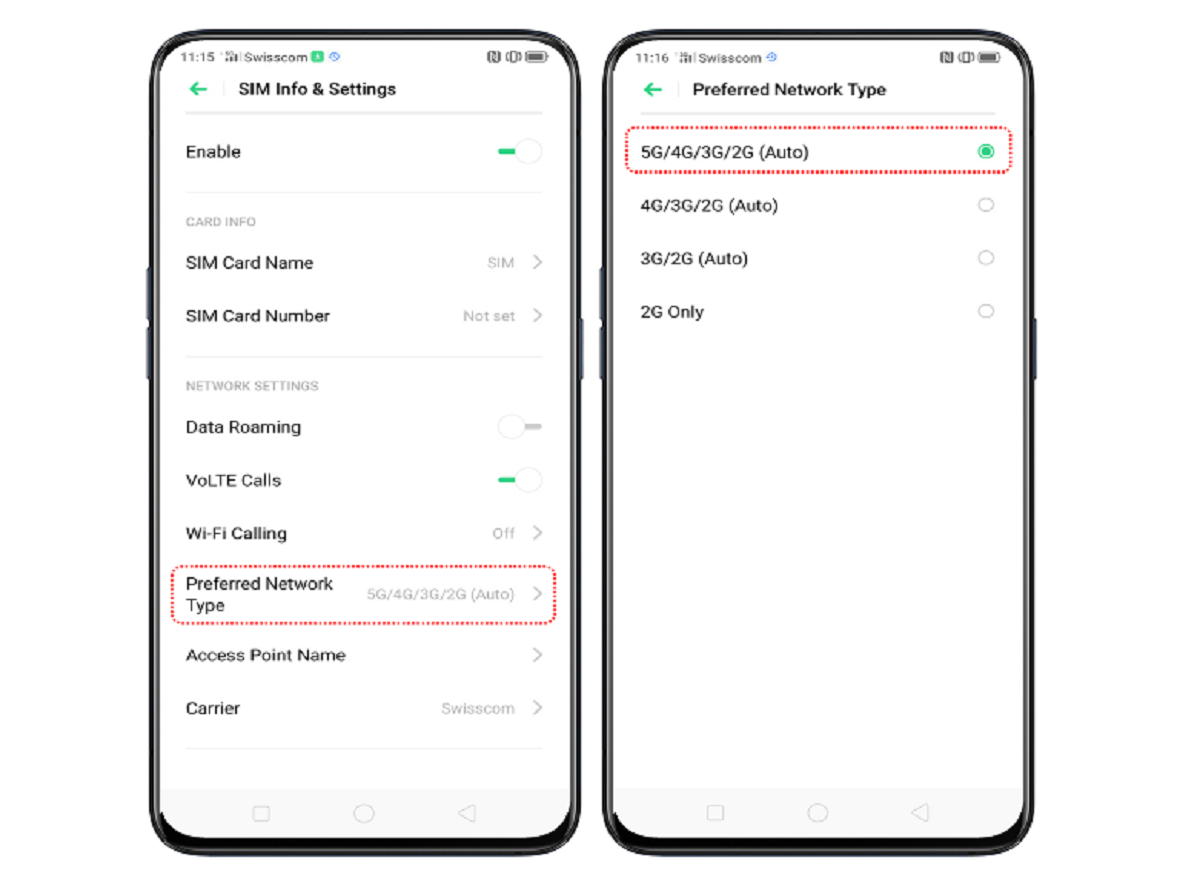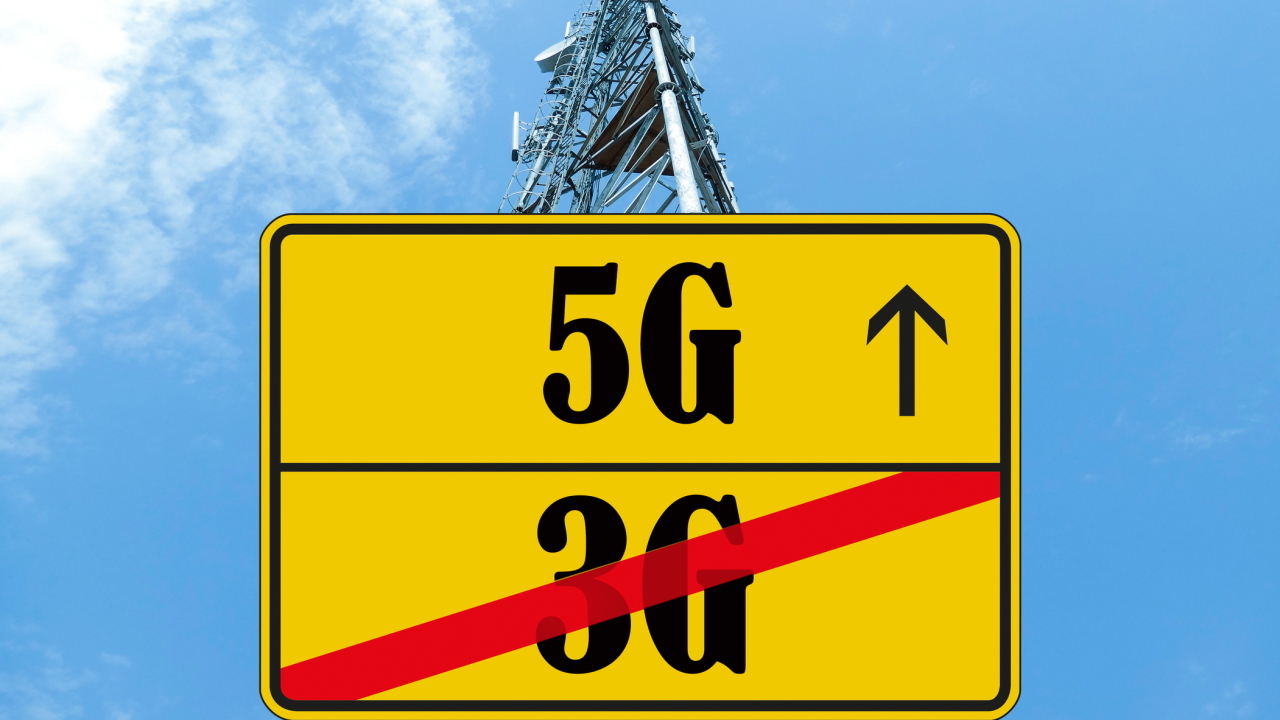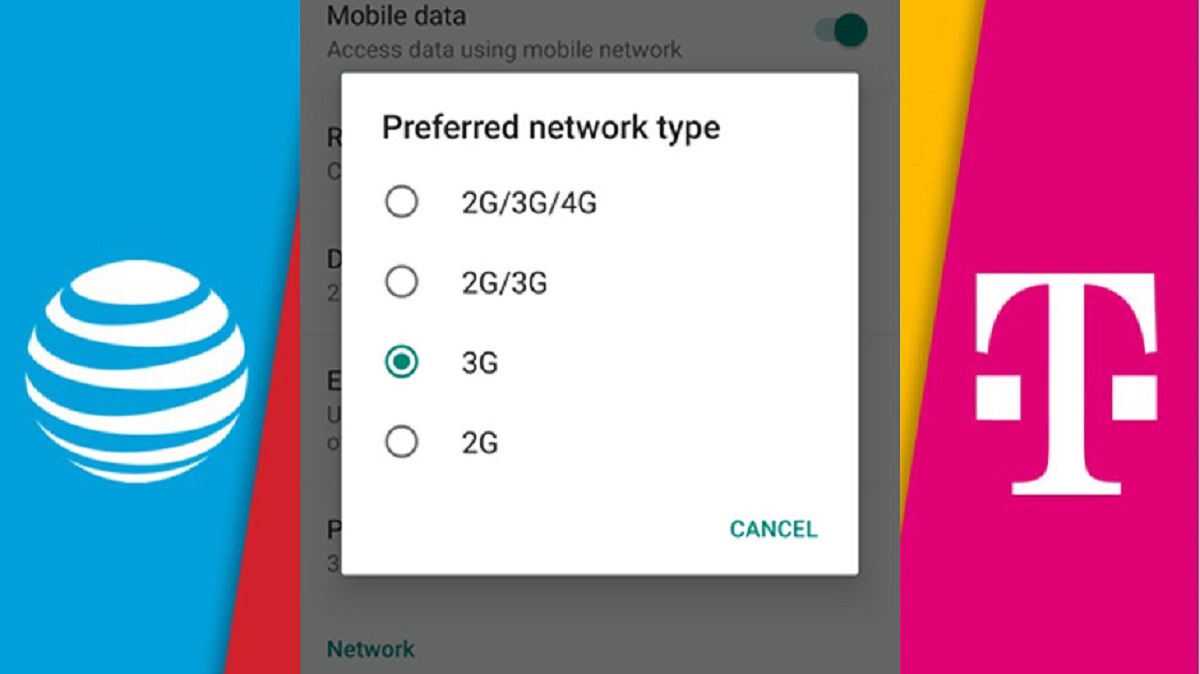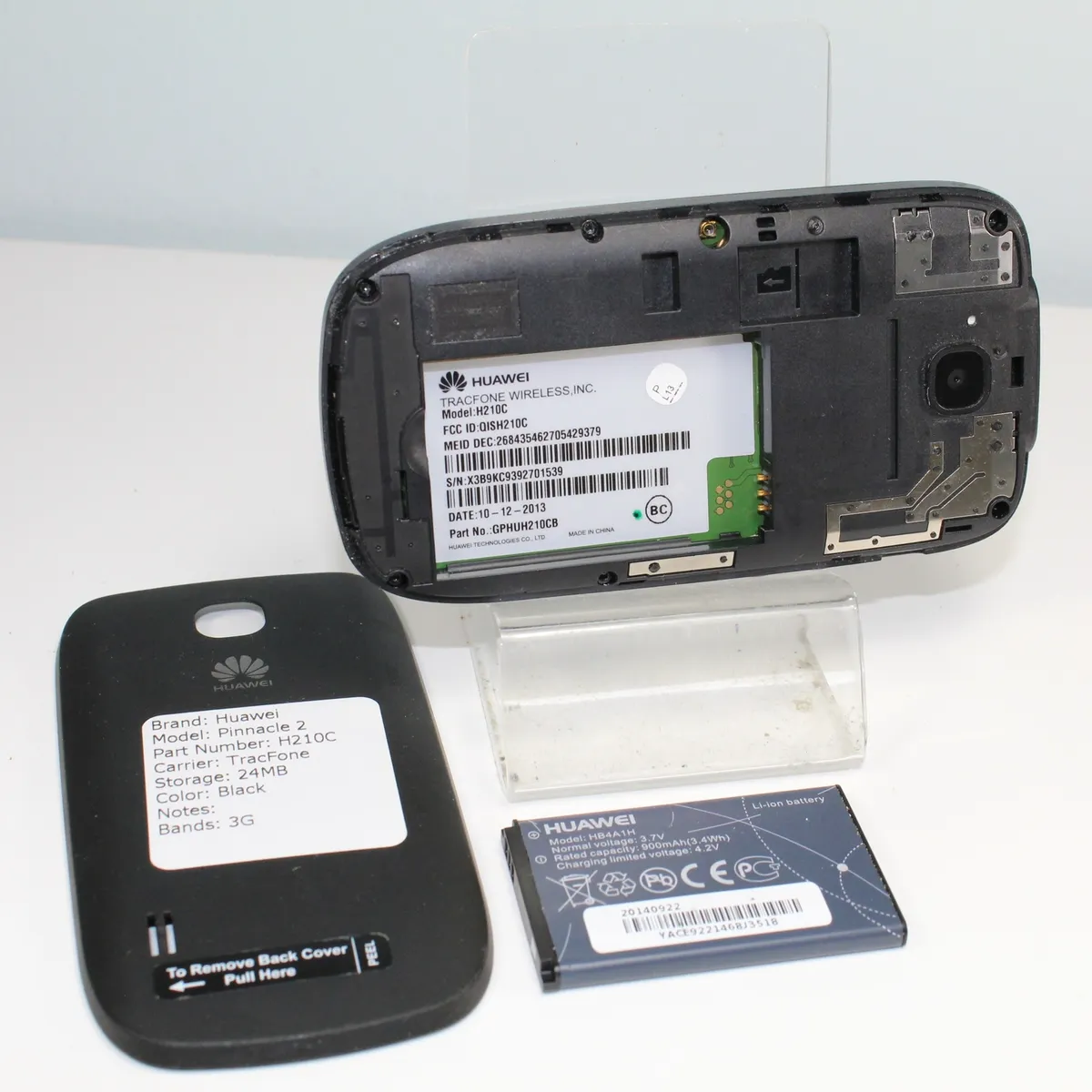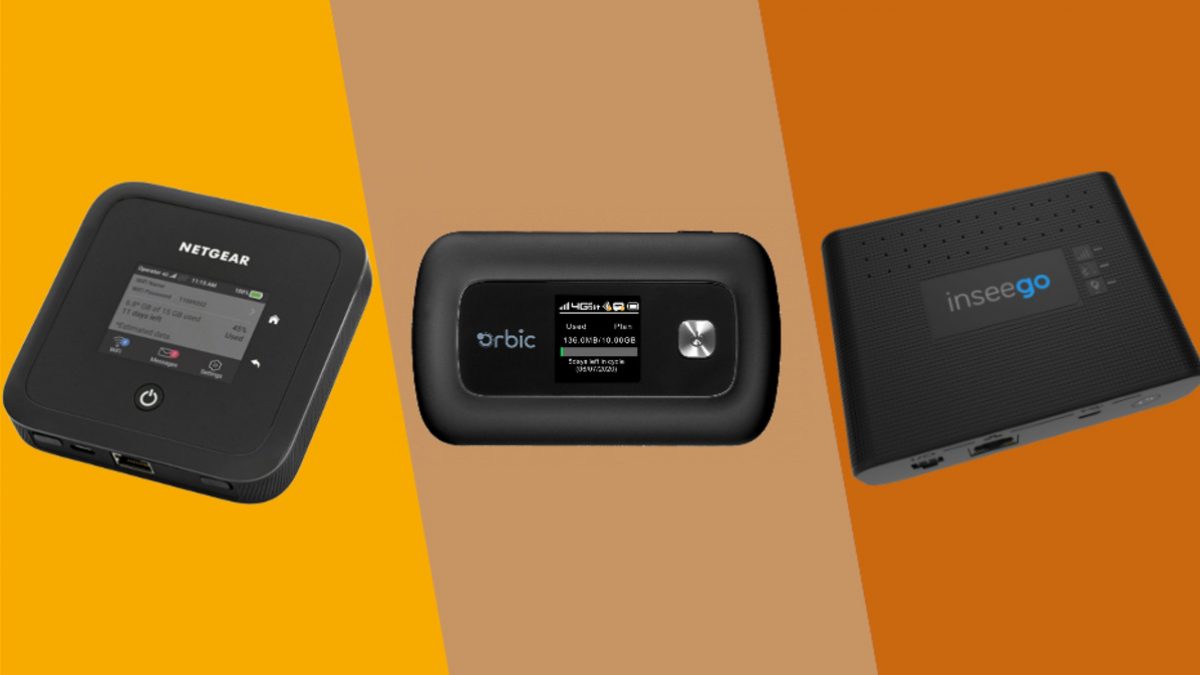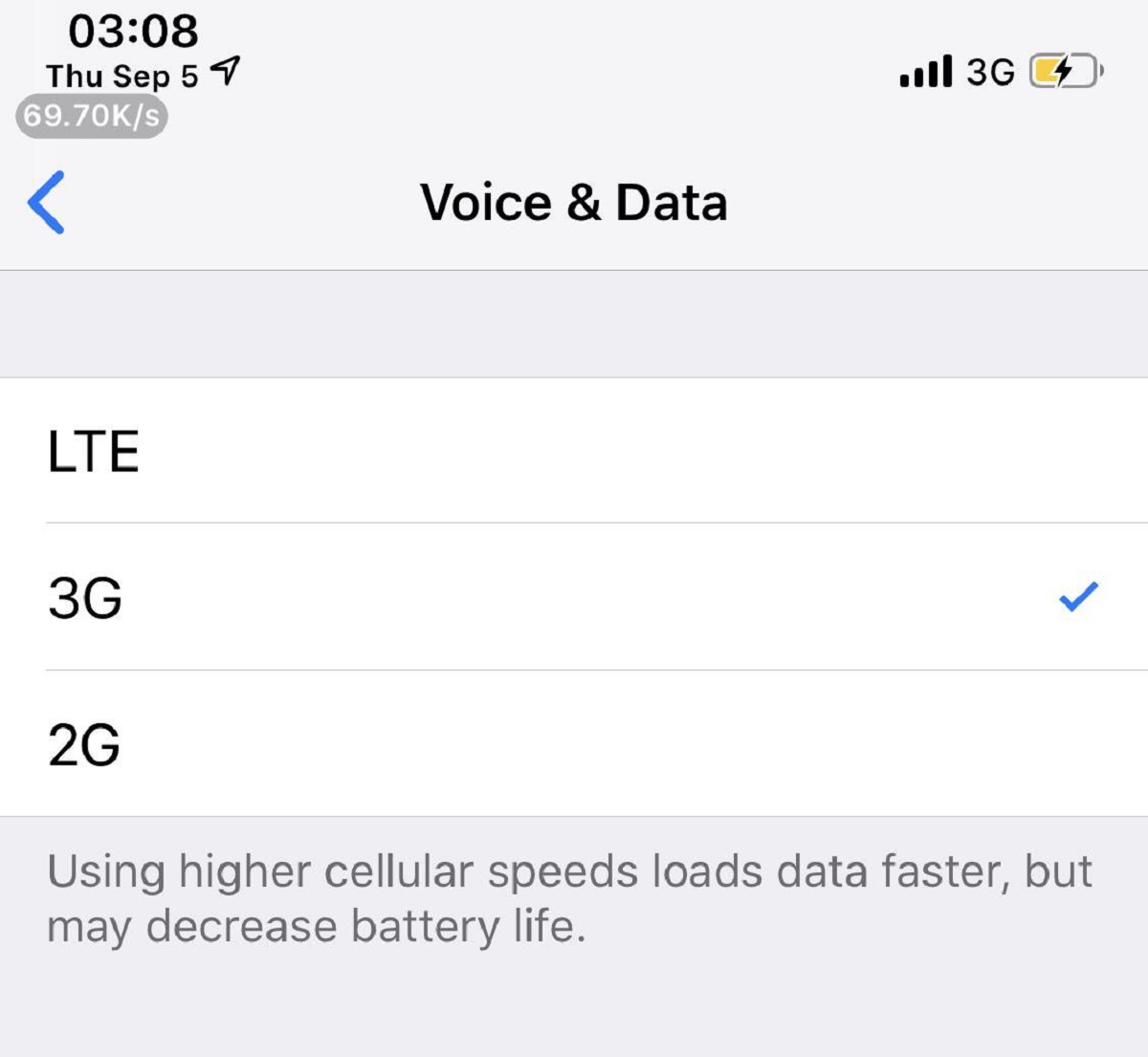Introduction
The evolution of technology has completely revolutionized the way we communicate and access information. Over the years, the internet has become an integral part of our daily lives, enabling us to connect with the world, stay updated, and access a wealth of resources with just a few clicks. In this digital age, the speed and efficiency of internet connectivity play a vital role in our online experiences.
One such technology that has transformed the way we connect to the internet is 4G, also known as the fourth generation of wireless technology. It offers faster internet speeds, improved reliability, and enhanced capabilities compared to its predecessors. With 4G, users can enjoy seamless streaming, faster downloads, and real-time interactions like never before.
In this article, we will explore the world of 4G technology. We will delve into its working principles, advantages, applications, limitations, and how it differs from previous generations. Additionally, we will discuss the various variants of 4G technology and its future prospects.
4G technology has gained widespread popularity and usage in recent years, becoming the go-to choice for mobile and wireless connectivity. It has transformed the way we use our smartphones, tablets, and other devices that rely on internet connectivity. Whether you’re streaming videos, playing online games, or conducting business on the go, 4G ensures a seamless and fast internet experience.
As the demand for faster and more reliable internet connectivity continues to grow, 4G technology remains at the forefront of providing efficient solutions. However, as we embrace the era of 4G, it is important to understand its working mechanisms, advantages, and potential limitations to fully harness its capabilities. So, let’s dive in and explore the world of 4G technology and the impact it has on our connected lives.
What is 4G?
4G, short for fourth-generation, refers to the latest wireless communication technology that offers significant improvements in terms of speed, reliability, and performance compared to its predecessors. It is a standard that enables mobile devices, such as smartphones, tablets, and laptops, to connect to the internet through cellular networks.
The primary goal of 4G technology is to provide users with faster data transmission rates, low latency, and enhanced quality of service. It offers download speeds ranging from 5 to 100 megabits per second (Mbps) and upload speeds ranging from 2 to 50 Mbps, depending on the network capabilities and infrastructure. This allows users to enjoy seamless streaming of high-definition videos, faster downloads of large files, and real-time online interactions without interruptions.
Compared to its predecessor, 3G, 4G technology offers a significant leap in terms of data transfer speeds. It uses a more advanced technology called Orthogonal Frequency Division Multiplexing (OFDM), which allows multiple signals to be transmitted simultaneously over a given frequency range. This results in increased network capacity and improved spectral efficiency, enabling more devices to connect and transmit data simultaneously without congestion.
Another key aspect of 4G technology is its support for IP-based communication, which means that all traffic, including voice calls, data, and multimedia content, is treated as internet Protocol (IP) packets. This enables seamless integration of voice and data services, making it easier for users to access a wide range of applications and services simultaneously without any disruptions.
Additionally, 4G technology incorporates advanced features such as Multiple Input Multiple Output (MIMO) and Carrier Aggregation (CA). MIMO utilizes multiple antennas to enhance signal strength, improve coverage, and reduce interference, resulting in a more stable and reliable connection. Carrier Aggregation combines multiple frequency bands to increase bandwidth and maximize data transmission speeds.
In summary, 4G technology is the fourth generation of wireless communication that offers faster speeds, improved network capacity, low latency, and seamless integration of voice and data services. It has revolutionized the way we connect to the internet, allowing us to experience high-speed connectivity on our mobile devices. With 4G, users can enjoy a wide range of applications and services without compromising on performance, marking a significant milestone in the evolution of wireless communication technology.
How Does 4G Technology Work?
4G technology operates on a complex network architecture that enables high-speed wireless communication. This technology relies on several key components and protocols to ensure efficient data transmission and seamless connectivity.
At its core, 4G technology utilizes a network of cell towers that are strategically located to provide coverage over a specific area, known as a cell. Each cell tower is equipped with multiple antennas and base stations that transmit and receive wireless signals. When a user initiates a data request, the signal is transmitted from the device to the nearest cell tower, which then relays the signal to the core network.
The core network is the backbone of the 4G technology infrastructure. It consists of several components, including the Mobile Switching Center (MSC), the Packet Gateway (PGW), and the Serving Gateway (SGW). The MSC handles voice calls and circuit-switched data, while the PGW and SGW are responsible for routing IP-based traffic.
To transmit data over the network, 4G uses the Long-Term Evolution (LTE) protocol, which is a key technology in 4G networks. LTE utilizes OFDM, as mentioned earlier, to divide the available frequency spectrum into multiple smaller subcarriers. These subcarriers are then modulated with user data and transmitted simultaneously, allowing for high data rates and increased capacity.
To enhance the efficiency of data transmission, 4G also utilizes MIMO technology. This technology involves the use of multiple antennas at both the base station and the user device. By transmitting and receiving multiple streams of data simultaneously, MIMO improves signal quality, reduces interference, and increases network capacity.
4G technology also incorporates advanced packet-switching techniques, such as IP Multimedia Subsystem (IMS). IMS enables seamless integration of various multimedia services, including voice calls, video calling, and messaging, over an IP-based infrastructure. With IMS, users can access a wide range of multimedia applications and services without any compatibility issues.
In terms of security, 4G technology employs robust encryption algorithms to protect data transmitted over the network. This ensures that users can securely browse the internet, perform online transactions, and access confidential information without the risk of unauthorized access.
In summary, 4G technology works by utilizing a network of cell towers, advanced protocols like LTE, and advanced techniques like MIMO to provide high-speed wireless communication. The technology relies on a complex network infrastructure to transmit data efficiently and securely. With its advanced features and capabilities, 4G technology has revolutionized the way we connect to the internet and opened up a world of possibilities for mobile communication and data usage.
Advantages of 4G Technology
4G technology offers numerous advantages over its predecessors, making it a game-changer in the world of wireless communication. Let’s explore some of the key benefits that 4G technology brings to the table.
1. Faster Speeds: One of the biggest advantages of 4G technology is its lightning-fast internet speeds. With download speeds ranging from 5 to 100 Mbps, users can enjoy seamless streaming of high-definition videos, faster downloads of large files, and lag-free online gaming experiences. This high-speed connectivity improves overall user experience and enables quick access to online content.
2. Low Latency: 4G technology significantly reduces the latency or delay in data transmission. This low latency is crucial for real-time interactions, such as video calling, online gaming, and live streaming. With 4G, users can enjoy smooth and lag-free communication, providing a more immersive and seamless experience.
3. Improved Network Capacity: 4G technology utilizes advanced techniques like OFDM and MIMO to increase network capacity and accommodate more users. This means that even in densely populated areas or during peak usage times, 4G networks can handle a large number of simultaneous connections without sacrificing speed or performance.
4. Seamless Integration of Services: 4G technology supports IP-based communication, allowing for the seamless integration of various services and applications. Users can access a wide range of multimedia services, including voice calls, video calling, messaging, and browsing, without any compatibility issues. This integration enhances convenience and productivity, as users can use multiple services simultaneously without disruptions.
5. Enhanced Mobile Experience: With 4G technology, mobile users can enjoy a richer and more immersive online experience. Whether they are streaming videos, browsing social media, accessing cloud-based applications, or playing online games, 4G offers a reliable and fast connection, enabling users to make the most of their mobile devices.
6. Improved Reliability: 4G networks are designed to provide greater reliability and stability compared to previous generations. The use of advanced technologies such as MIMO and carrier aggregation helps to minimize signal interference and provide a more robust connection. This ensures that users experience fewer dropped calls, reduced buffering, and more consistent internet connectivity.
7. Broad Coverage: 4G technology has expansive coverage, allowing users to stay connected over large areas. The deployment of multiple cell towers and the use of higher frequency bands ensure that 4G signals can reach remote and rural areas, offering internet access to populations that were previously underserved.
In summary, 4G technology offers a multitude of advantages, including faster speeds, low latency, improved network capacity, seamless integration of services, enhanced mobile experiences, improved reliability, and broad coverage. These advantages have transformed the way we connect and communicate, providing a more efficient and enjoyable online experience for users around the globe.
Applications of 4G Technology
4G technology has revolutionized the way we utilize mobile devices and access the internet. Its high-speed connectivity, low latency, and seamless integration of services have opened up a wide range of applications across various sectors. Let’s explore some of the key applications of 4G technology.
1. Mobile Communication: 4G technology has transformed the way we communicate on our mobile devices. It enables high-quality voice calls, video calling, and messaging, allowing us to stay connected with friends, family, and colleagues with ease. The seamless integration of services on 4G networks provides a versatile communication platform for personal and professional use.
2. Video Streaming: 4G’s high-speed connectivity and low latency have made it a boon for video streaming applications. Users can now enjoy smooth and uninterrupted streaming of high-definition videos on platforms like YouTube, Netflix, and Hulu. This has revolutionized the way we consume digital content and has contributed to the rise of streaming services globally.
3. Online Gaming: The low latency and fast response times of 4G technology have greatly enhanced the gaming experience on mobile devices. Gamers can now play multiplayer online games in real-time, without experiencing significant lag or delays. This has opened up new opportunities for mobile gaming and eSports, allowing gamers to compete with players from around the world.
4. IoT (Internet of Things) Connectivity: 4G technology plays a crucial role in connecting and controlling IoT devices. From smart homes and wearable devices to industrial automation and remote monitoring systems, 4G enables seamless communication and data transfer between connected devices. This allows for efficient data collection, monitoring, and automation in various sectors.
5. Remote Work and Collaboration: With the rise of remote work and virtual collaboration, 4G technology has become a vital tool for professionals. It allows for smooth video conferencing, document sharing, and real-time collaboration, enabling teams to work together seamlessly from different locations. This flexibility has greatly contributed to the productivity and efficiency of remote work setups.
6. E-commerce and Mobile Banking: 4G technology has transformed the landscape of e-commerce and mobile banking. With fast and secure internet connectivity, users can easily browse online stores, make purchases, and conduct financial transactions on their mobile devices. This has led to the growth of mobile commerce and has made financial services more accessible to a wider population.
7. Telemedicine and Remote Healthcare: 4G technology has opened up new possibilities in the field of telemedicine and remote healthcare. It enables virtual consultations, remote patient monitoring, and the exchange of medical data in real-time. This has improved access to healthcare services, especially in remote areas, and has contributed to the efficiency of healthcare systems.
In summary, 4G technology has found applications across various sectors, including mobile communication, video streaming, online gaming, IoT connectivity, remote work, e-commerce, mobile banking, telemedicine, and more. These applications have transformed the way we communicate, work, access information, and conduct daily activities, making 4G technology an essential part of our digital lives.
Limitations of 4G Technology
While 4G technology offers numerous advantages, it does come with some limitations that are important to consider. Understanding these limitations helps us manage expectations and make informed decisions regarding its usage. Let’s explore some of the key limitations of 4G technology.
1. Coverage and Availability: Although 4G networks have expanded significantly, there are still areas with limited or no coverage. Rural and remote areas often face challenges in accessing 4G services due to infrastructure limitations. Additionally, signal strength and coverage may vary within buildings or in areas with dense obstructions, impacting the quality of the connection.
2. Network Congestion: As 4G networks become more widely used, network congestion can occur, especially in densely populated areas and during peak usage times. This can lead to reduced speeds and increased latency. In crowded locations such as concerts or sporting events, the increased number of users accessing the network simultaneously can impact the overall performance.
3. Battery Drain: 4G technology consumes more power compared to its predecessors, which can lead to increased battery drain on mobile devices. The constant search for a strong signal and the processing power required for high-speed data transmission can significantly impact the battery life. This may require users to carry portable chargers or find ways to optimize battery usage.
4. Cost: The deployment and maintenance of 4G networks require significant investment in infrastructure and technology upgrades. This cost is often passed on to the consumers in the form of higher data plans and device prices. Access to 4G technology may not be affordable for everyone, limiting its accessibility and widening the digital divide in certain regions.
5. Interference: 4G networks, especially in urban areas, can be susceptible to interference from other electronic devices or environmental factors. This interference can lead to reduced signal quality, slower speeds, and increased latency, impacting the overall user experience. Network providers employ various techniques to mitigate interference, but it remains a limitation in certain scenarios.
6. Compatibility: While 4G technology has become widely adopted, some older devices may not be compatible with 4G networks. This can restrict users from taking full advantage of the technology if they have older devices that only support 3G or lower. Upgrading to 4G-compatible devices may be necessary for optimal performance and access to advanced features.
7. Security Concerns: 4G networks, like any wireless technology, can pose security risks. Cyberattacks, data breaches, and unauthorized access to personal information are potential concerns. It is crucial for users to adopt safe practices, such as using secure networks, regularly updating device software, and being vigilant about online security threats.
In summary, while 4G technology offers significant advancements in wireless communication, it is not without its limitations. Coverage and availability, network congestion, battery drain, cost, interference, compatibility, and security concerns are important factors to consider. Despite these limitations, ongoing advancements in technology and the deployment of 5G networks aim to address these issues and further improve wireless communication in the future.
Comparison between 4G and Previous Generations (3G, 2G)
The evolution of mobile communication technology has seen the transition from 2G to 3G and now to 4G. Each generation brings significant improvements in terms of speed, capacity, and capabilities. Let’s compare 4G with its predecessors, 3G and 2G, to understand the advancements it offers.
1. Speed: One of the key differentiators between 4G and previous generations is the speed. 4G offers much faster download and upload speeds compared to 3G and 2G. While 3G provides average download speeds of around 2 Mbps, 4G can offer speeds ranging from 5 to 100 Mbps. 2G, on the other hand, offers speeds of up to 0.1 Mbps, making it significantly slower than both 3G and 4G.
2. Latency: Latency, or the delay in data transmission, is also improved in 4G compared to 3G and 2G. 4G technology reduces latency, allowing for near-instantaneous responses. This low latency is crucial for real-time applications such as video calling, online gaming, and live streaming, providing a much smoother and more immersive experience compared to previous generations.
3. Capacity: 4G offers increased capacity compared to 3G and 2G. It can support a larger number of simultaneous connections and handle more data traffic, resulting in improved network performance and reduced congestion. This increased capacity is achieved through advanced technologies like OFDM and MIMO, which enable more efficient use of the available frequency spectrum.
4. Integration of Services: 4G technology seamlessly integrates various services, including voice, data, and multimedia, over an IP-based network. This integration allows users to access a wide range of applications simultaneously, without any compatibility issues. In contrast, 3G and 2G often required separate networks for voice calls and data services, resulting in less efficient utilization of resources.
5. Multimedia Capabilities: 4G technology offers enhanced multimedia capabilities compared to 3G and 2G. It allows for high-quality video streaming, video calling, and multimedia content sharing without buffering or interruptions. This has revolutionized the way we consume media on our mobile devices and has contributed to the rise of video-centric platforms and applications.
6. Improved Reliability: 4G networks are more reliable than 3G and 2G networks. With advanced technologies like MIMO and carrier aggregation, 4G provides improved signal strength, coverage, and reduced interference. This leads to fewer dropped calls, improved call quality, and more consistent internet connectivity compared to previous generations.
7. Evolving Infrastructure: The infrastructure for 4G is more advanced and capable of supporting future advancements. As 4G paves the way for 5G technology, the infrastructure can be easily upgraded and tailored to meet the increasing demands for faster speeds, higher capacity, and new applications.
In summary, 4G technology offers significant improvements in terms of speed, latency, capacity, integration of services, multimedia capabilities, reliability, and infrastructure compared to 3G and 2G. This evolution has led to enhanced user experiences, the rise of new applications and services, and a more connected world. As we look ahead to 5G technology, the bar for mobile communication continues to rise and promises even greater advancements in the near future.
Different Variants of 4G Technology
4G technology encompasses several different variants that offer variations in terms of speed, performance, and network capabilities. Let’s explore some of the key variants of 4G technology that have been developed and deployed globally.
1. LTE (Long-Term Evolution): LTE is one of the most widely deployed variants of 4G technology. It provides high data transfer rates, low latency, and improved network capacity compared to previous generations. LTE utilizes Orthogonal Frequency Division Multiplexing (OFDM) to divide the available frequency spectrum into multiple smaller subcarriers, allowing for faster data transmission.
2. LTE-Advanced: LTE-Advanced is an enhanced version of LTE that offers even higher speeds and improved performance. It incorporates advanced features such as carrier aggregation, which combines multiple frequency bands to increase bandwidth and maximize data transfer rates. LTE-Advanced also supports higher order MIMO, allowing for the use of more antennas and better signal quality.
3. LTE-Advanced Pro: LTE-Advanced Pro, also known as 4.5G or 4G+, is a further evolution of LTE technology. It offers even faster speeds and increased network capacity compared to LTE-Advanced. LTE-Advanced Pro supports advanced features like higher order MIMO, carrier aggregation with more carrier bands, and License Assisted Access (LAA), which enables the utilization of unlicensed frequency bands for data transmission.
4. WiMAX (Worldwide Interoperability for Microwave Access): Although not as widely adopted as LTE, WiMAX is another variant of 4G technology. It offers high-speed wireless broadband connectivity over a wider area, making it suitable for providing internet access in areas where wired connections are not feasible. WiMAX utilizes Orthogonal Frequency Division Multiple Access (OFDMA) and Multiple-Input Multiple-Output (MIMO) technologies to achieve high data rates and improved coverage.
5. TD-LTE (Time Division Long-Term Evolution): TD-LTE is a variant of LTE that uses time-division duplexing for transmission. Unlike traditional LTE, which uses frequency-division duplexing, TD-LTE uses the same frequency band for both uplink and downlink transmissions, but at different time intervals. TD-LTE is commonly deployed in regions where frequency availability is limited or when operators already have a significant investment in time-division-based technologies.
6. LAA (License Assisted Access): LAA is a technology that combines licensed cellular bands with unlicensed frequency bands, typically in the 5 GHz spectrum, to increase network capacity and improve data speeds. LAA allows operators to leverage both licensed and unlicensed spectrum resources to offer faster and more reliable 4G connectivity.
These are just a few examples of the different variants of 4G technology that have been developed and deployed around the world. Each variant comes with its own set of features and capabilities, offering specific advantages based on the operational requirements and frequency availability in different regions. As technology continues to evolve, we can expect further advancements and variants in 4G technology, paving the way for the transition to 5G in the near future.
Future Development of 4G Technology
Although 5G technology is already being deployed in many countries, the development and evolution of 4G technology are not stagnant. As we move forward, there are still exciting advancements and potential developments in store for 4G. Let’s take a look at some of the future developments of 4G technology.
1. Enhanced Network Coverage: One area of future development for 4G technology is improving network coverage. Efforts are being made to expand the reach of 4G networks to remote and underserved areas. This involves the deployment of additional cell towers, the use of satellite technologies, and the exploration of innovative solutions to bridge the digital divide. These initiatives aim to ensure that even regions without access to 5G can benefit from reliable and high-speed connectivity.
2. Improved Spectrum Efficiency: Enhancing spectrum efficiency is another focus for future 4G development. This involves optimizing the allocation and utilization of the available frequency spectrum to maximize data transmission rates and network capacity. Advanced techniques such as advanced interference management, spectrum sharing, and dynamic spectrum allocation are being explored to make 4G networks more efficient and capable of handling increasing data demands.
3. Evolution of LTE-Advanced and LTE-Advanced Pro: LTE-Advanced and LTE-Advanced Pro will continue to evolve to unlock even higher speeds and improved performance. Advanced features like higher order MIMO, expanded carrier aggregation, and improved modulation schemes will be utilized to achieve faster download and upload speeds. These advancements will allow 4G networks to keep up with the demands of data-intensive applications and services.
4. Integration with 5G Infrastructure: As 5G networks continue to expand, there will be increased integration and interoperability between 4G and 5G infrastructure. This will enable seamless handovers between 4G and 5G networks, providing a smooth user experience as users move between different coverage areas. The integration of 4G with 5G will allow operators to maximize the utilization of their existing 4G infrastructure while transitioning to 5G gradually.
5. Advanced LTE Applications: Future development of 4G technology will also focus on creating new and innovative applications that leverage the capabilities of LTE networks. This includes augmented reality (AR), virtual reality (VR), autonomous vehicles, smart city solutions, and more. By harnessing the speed, low latency, and reliability of 4G networks, these applications will further enhance and enrich our digital experiences.
It’s important to note that the future development of 4G technology will be influenced by the increasing adoption and deployment of 5G networks. As 5G continues to evolve and gain prominence, 4G technology will gradually transition to a supporting role. Nonetheless, the ongoing advancements and improvements in 4G will ensure that it remains a viable and essential technology for reliable and high-speed mobile connectivity in areas without 5G coverage, enabling a seamless user experience for years to come.
Conclusion
In conclusion, 4G technology has transformed the way we connect, communicate, and access information on our mobile devices. With its faster speeds, lower latency, improved network capacity, and seamless integration of services, 4G has revolutionized the mobile experience for users worldwide.
The advancements in 4G technology have enabled us to enjoy high-quality video streaming, real-time online gaming, seamless video calling, and access to a wide range of applications on our smartphones and tablets. 4G has made it possible to work remotely, shop online, conduct financial transactions, and connect IoT devices, contributing to increased efficiency and productivity in various industries.
Although the rollout of 5G technology is steadily progressing, 4G remains an important player in the realm of wireless communication. Its broad coverage, wide device compatibility, and evolving infrastructure make it a reliable and accessible option for users globally. Additionally, the ongoing development of 4G technology aims to enhance network coverage, improve spectrum efficiency, and further unlock its capabilities.
As we move forward, the integration of 4G with 5G networks and the adoption of advanced LTE-Advanced and LTE-Advanced Pro technologies will ensure a smooth transition and continued support for existing 4G infrastructure. Moreover, the future of 4G technology will also witness the emergence of advanced applications that take advantage of its speed, low latency, and reliability.
In conclusion, 4G technology has ushered in an era of fast and reliable mobile connectivity, empowering individuals and revolutionizing industries. It has transformed the way we live, work, and interact with the digital world, bringing us closer together and enabling us to stay connected anywhere, anytime. As we look to the future, 4G technology will continue to be a vital component of our mobile communication landscape, providing seamless and immersive experiences for users worldwide.







